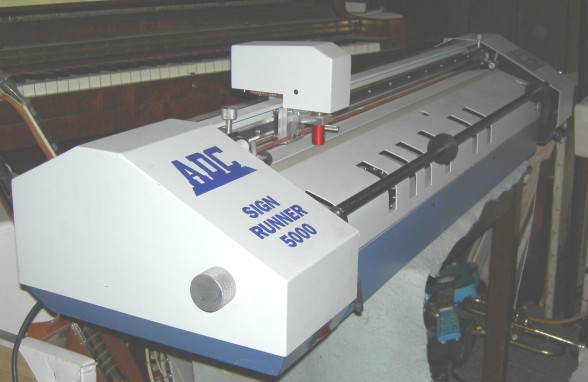RakerTooth
New Member
I got hold of a plotter from a freind, I don't know yet whether it works, but it shows promise. On the housing, it says "ADC sign runner 5000". There are no other stickers and such, and a Google search was negative. Then I found a sticker inside that says "Newing Hall Inc." That did turn up some info on a search, but nothing about plotters specifically. The company is big into engraving machines, and other stuff. I guess they sell a limited number of sigh plotters, and that's what this is, no doubt. Friction feed or punched, with 7 different widths possible for the punched wheel.
It's a big, neat-o looking machine, and maybe even made in the US. I won't be able to contact the company till monday. In the meantime, I'll probably try running it with a Roland driver, or an old HP pen plotter driver. They're all HPGL as far as I know, and it's surpising how interchangeable some of these old drivers are. I think sometimes they're called "generic drivers".
Anyway, has anyone seen or heard about this company or plotter? Thanks for any help.
It's a big, neat-o looking machine, and maybe even made in the US. I won't be able to contact the company till monday. In the meantime, I'll probably try running it with a Roland driver, or an old HP pen plotter driver. They're all HPGL as far as I know, and it's surpising how interchangeable some of these old drivers are. I think sometimes they're called "generic drivers".
Anyway, has anyone seen or heard about this company or plotter? Thanks for any help.



 for continuing to help with this relic, to have a 24 and 36 inch punched plotter would be awesome, and this thing is in great shape.
for continuing to help with this relic, to have a 24 and 36 inch punched plotter would be awesome, and this thing is in great shape.